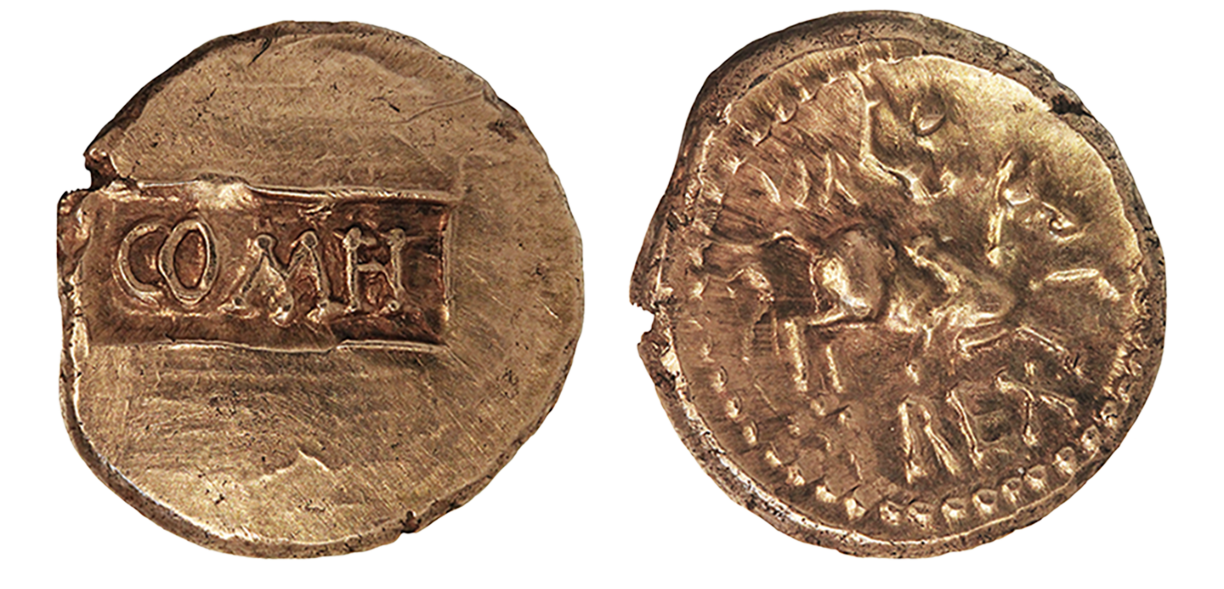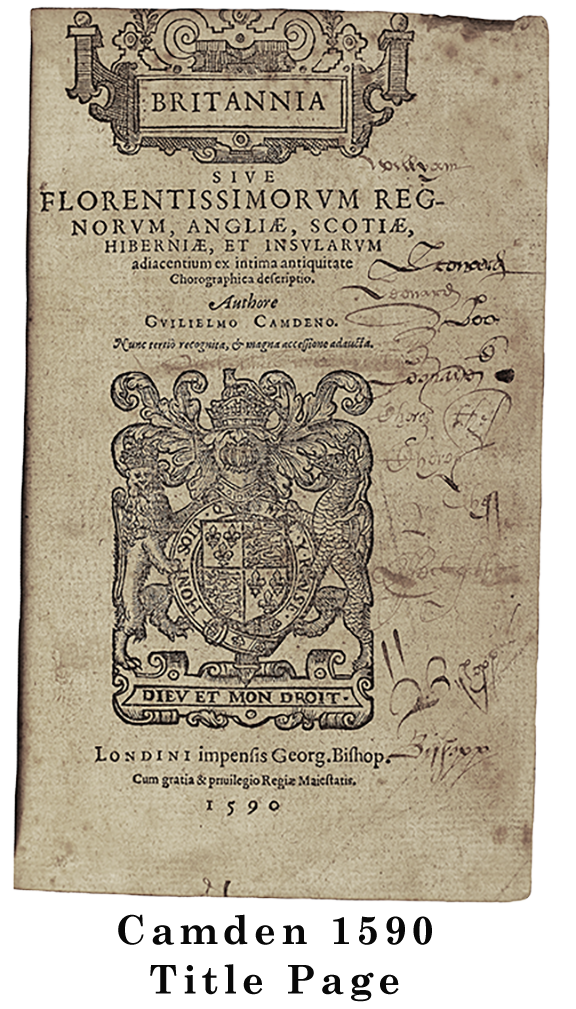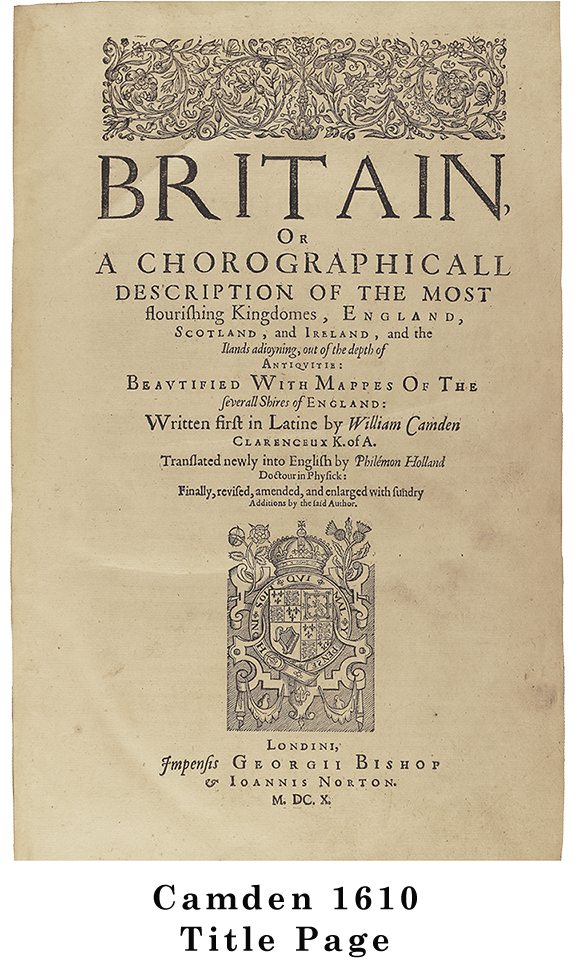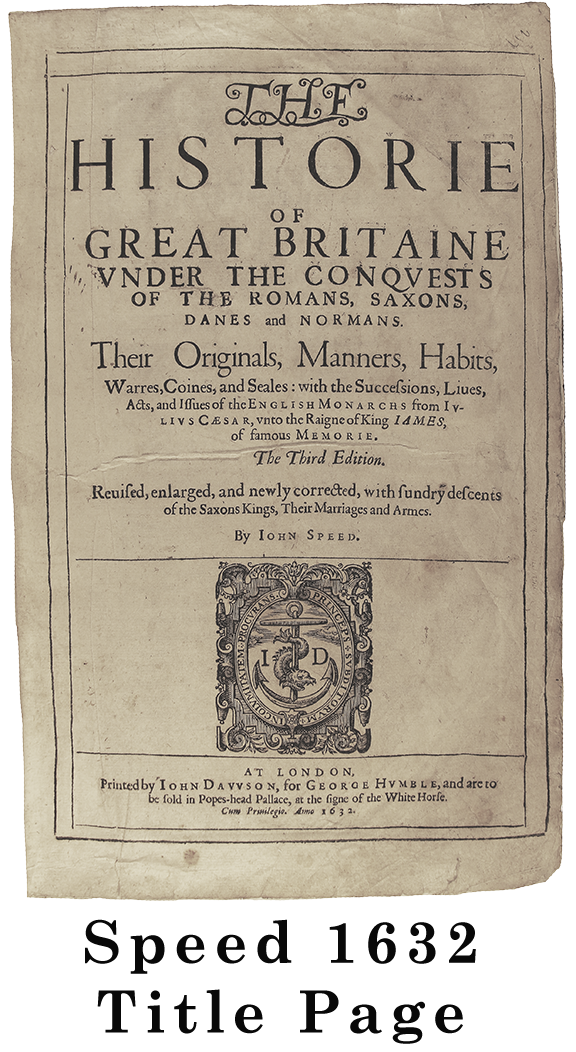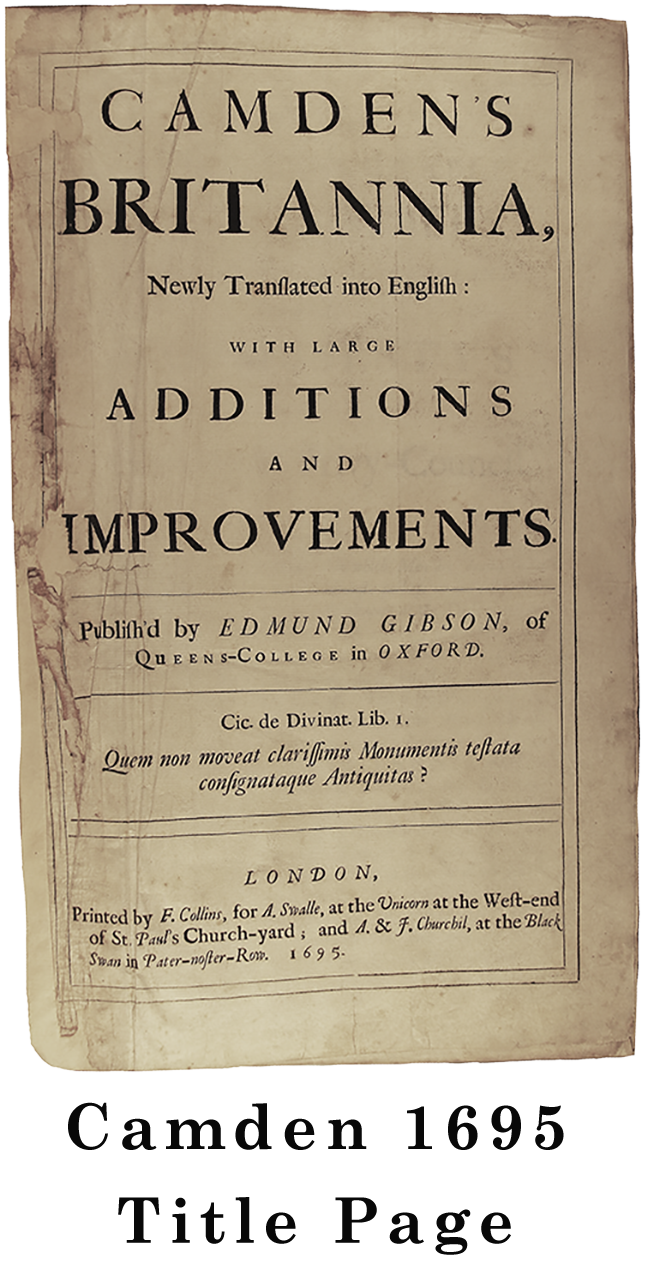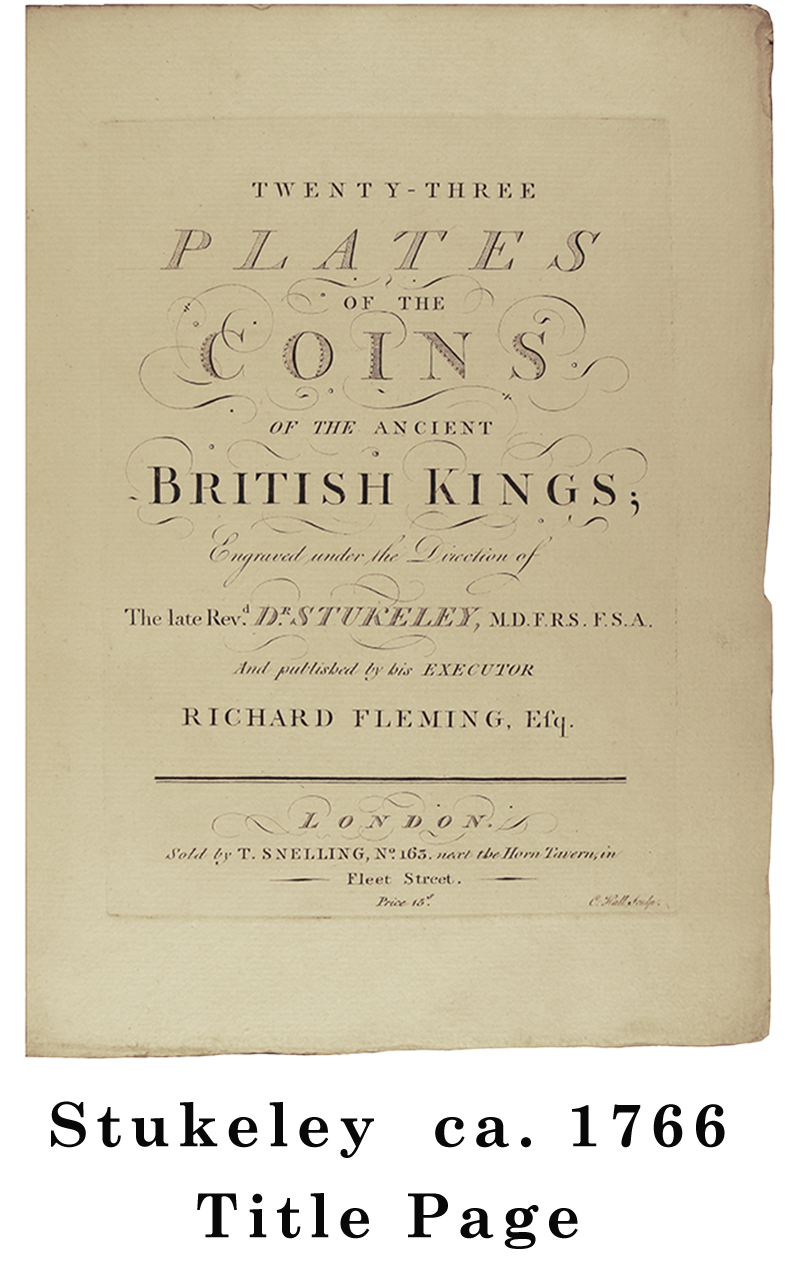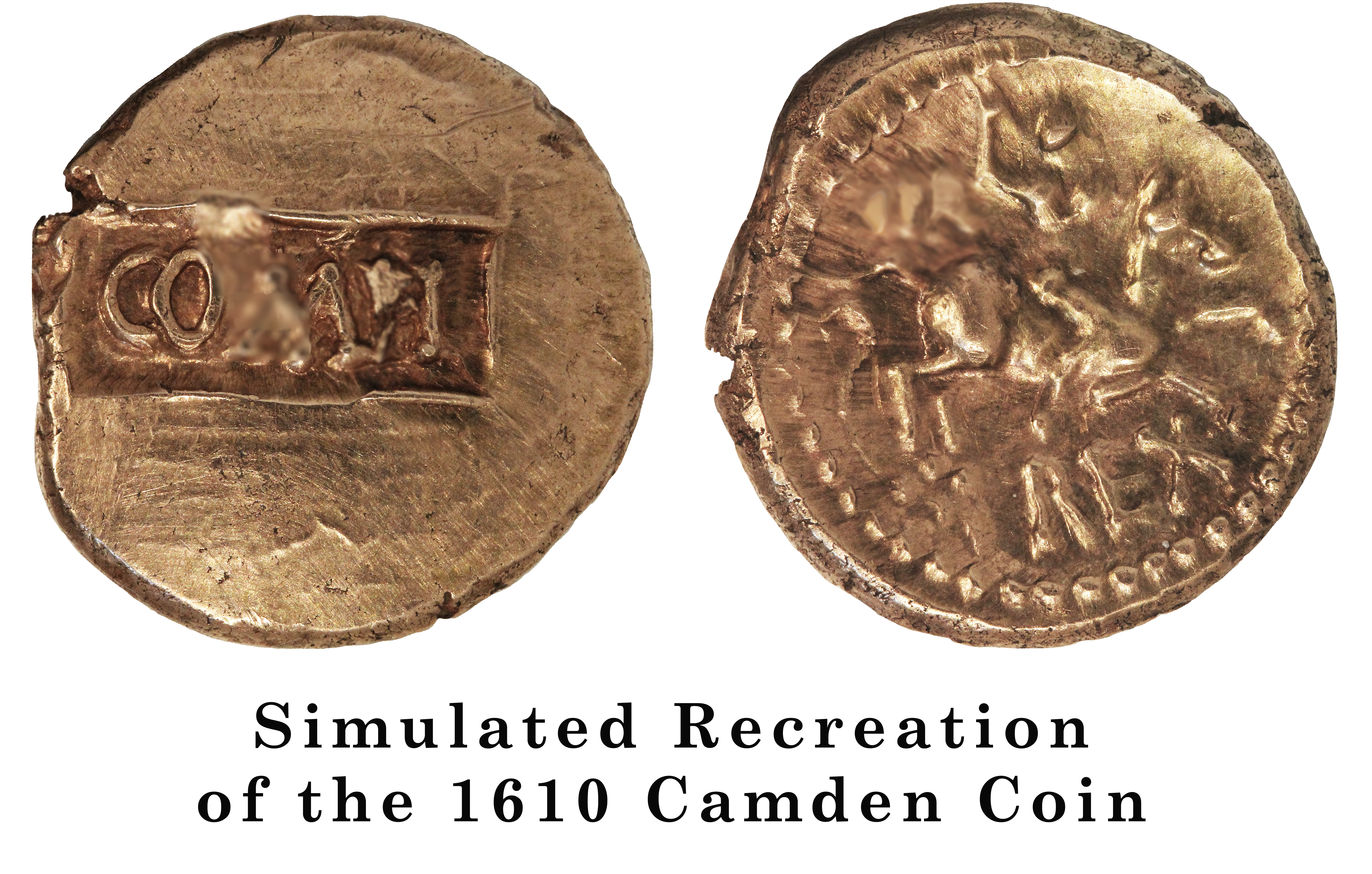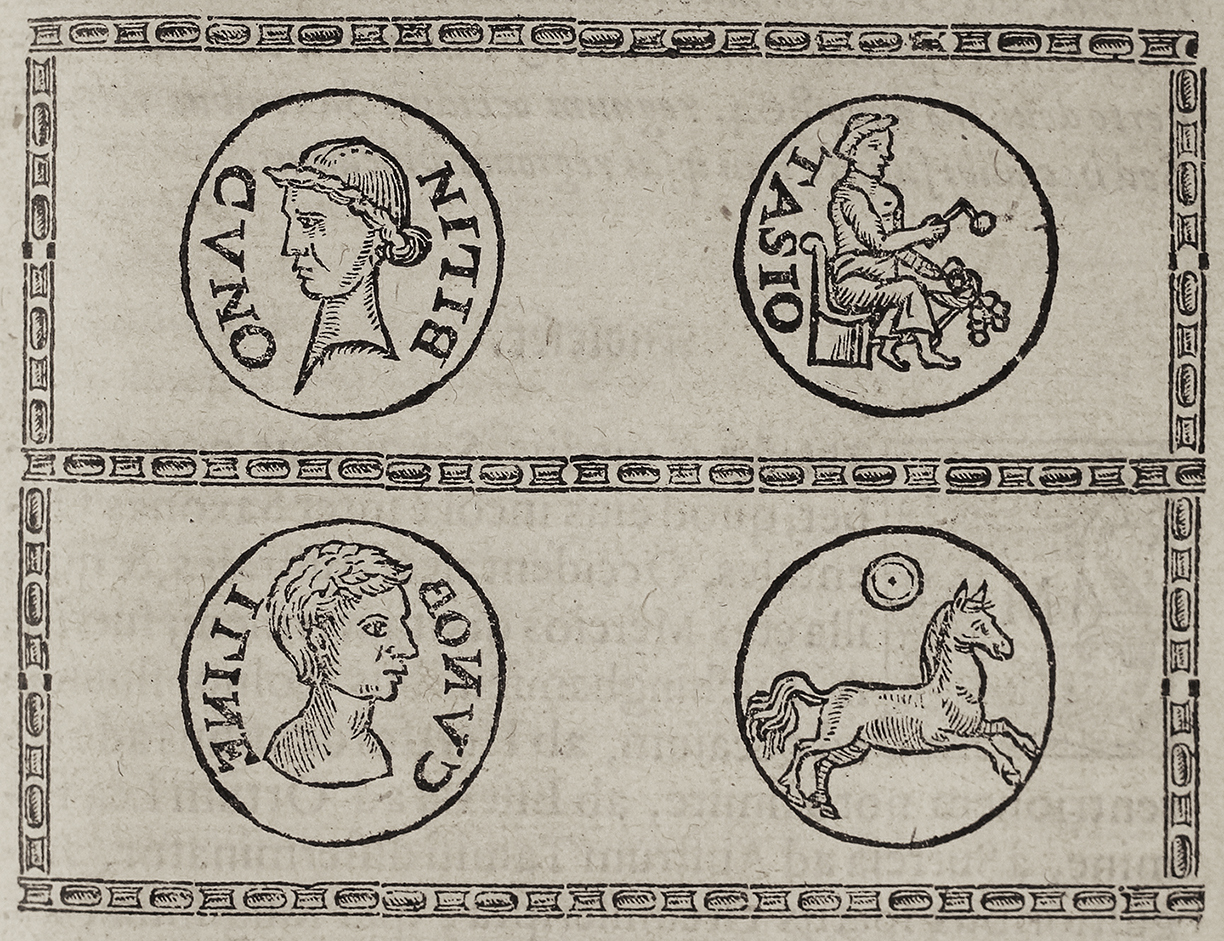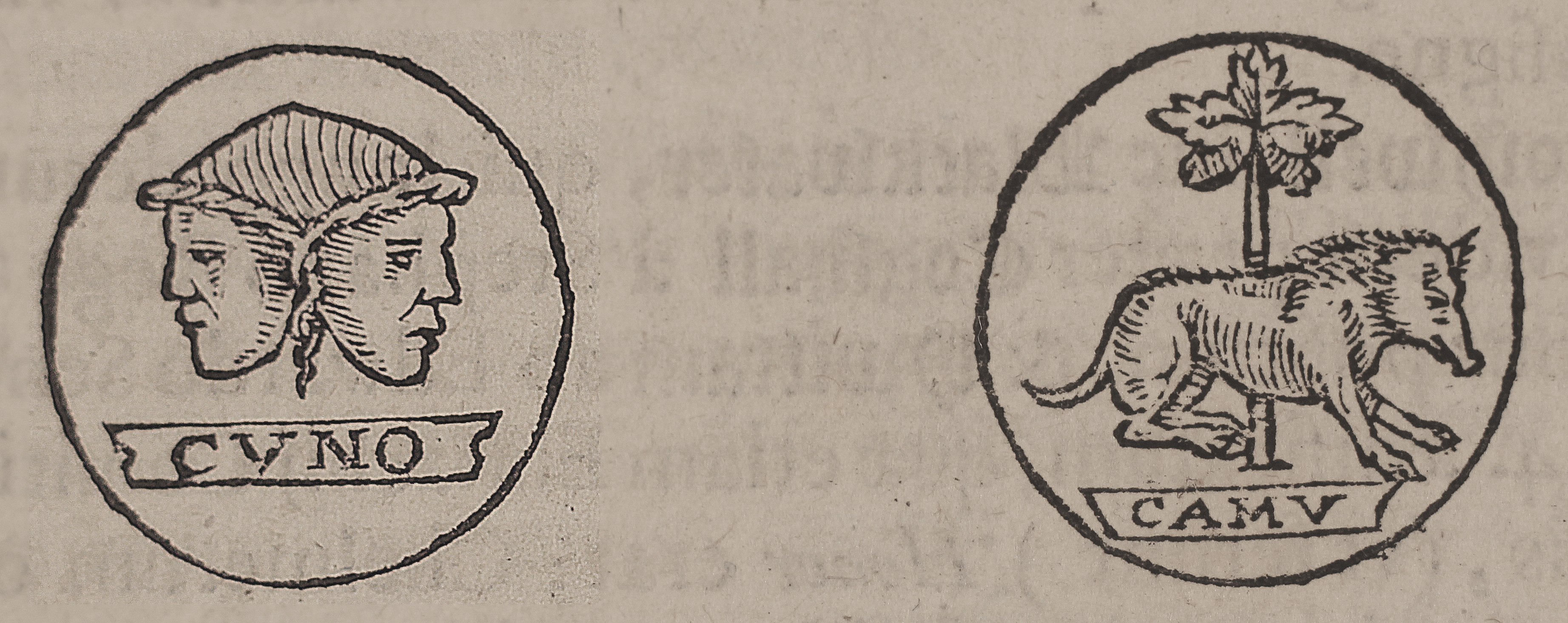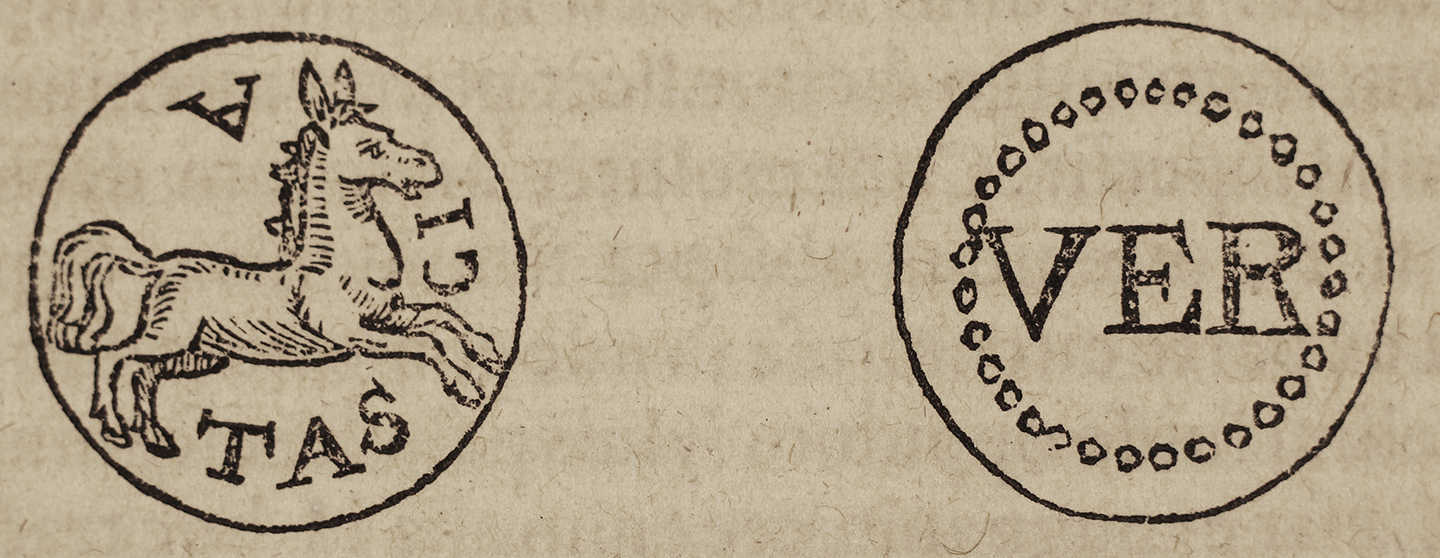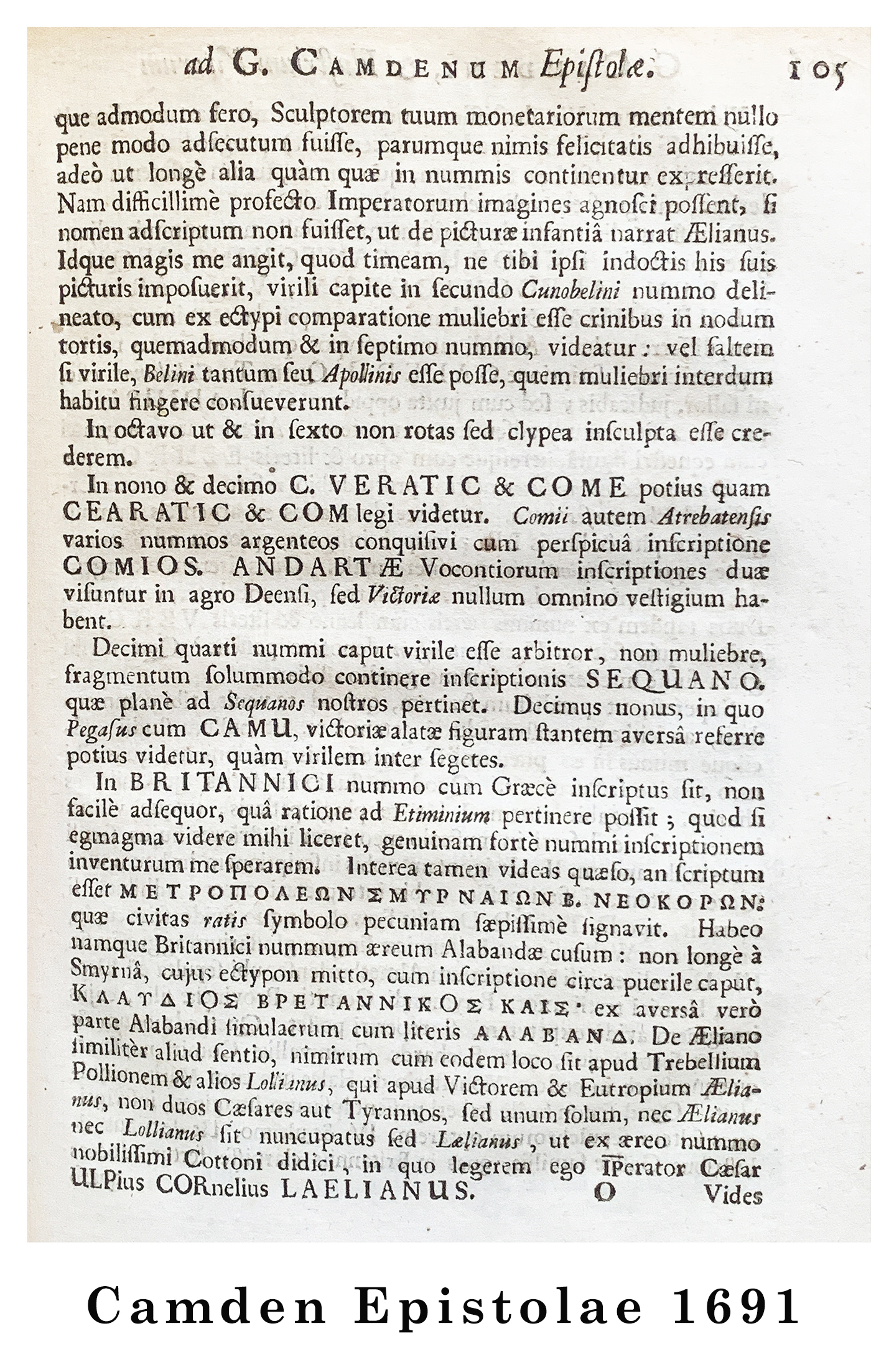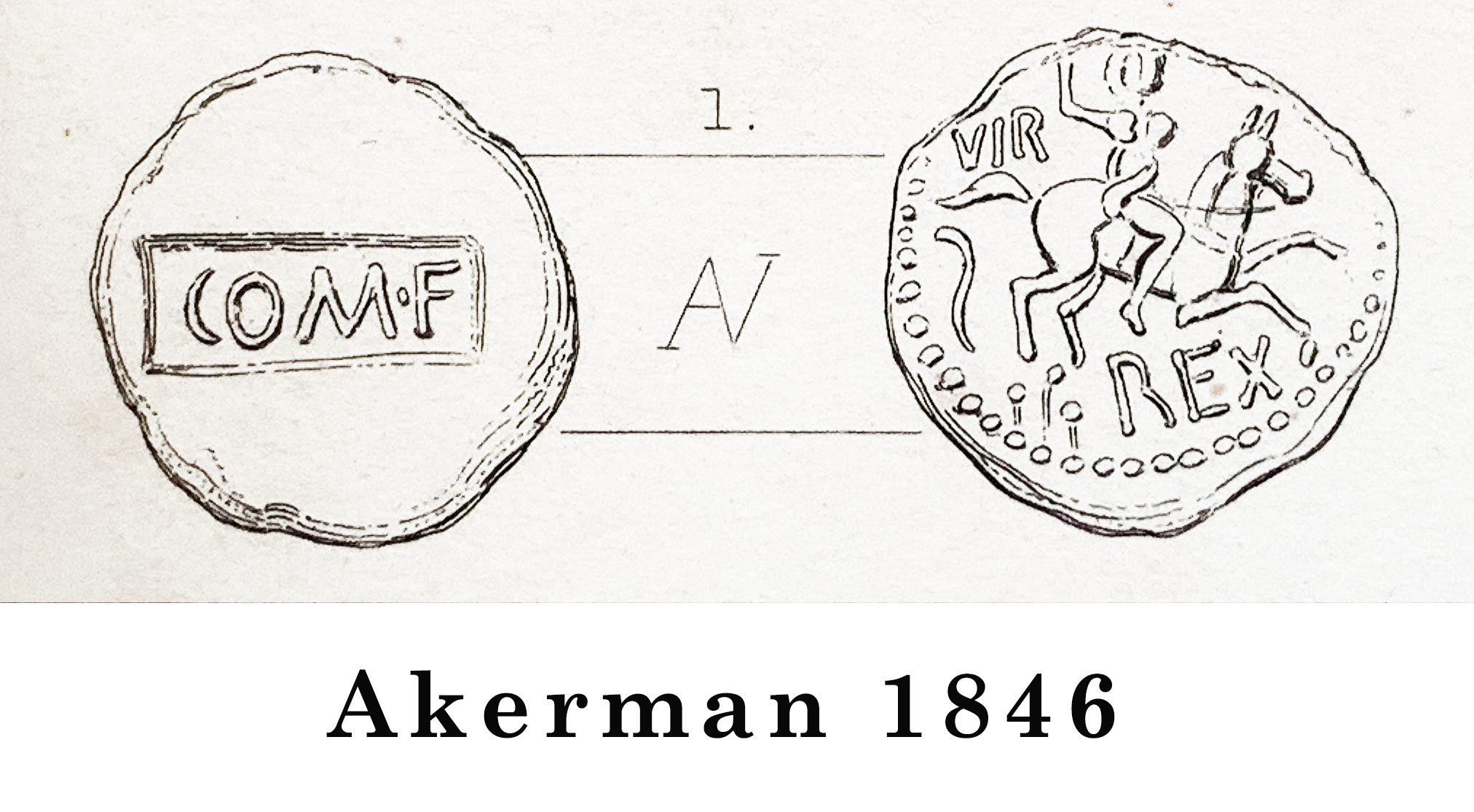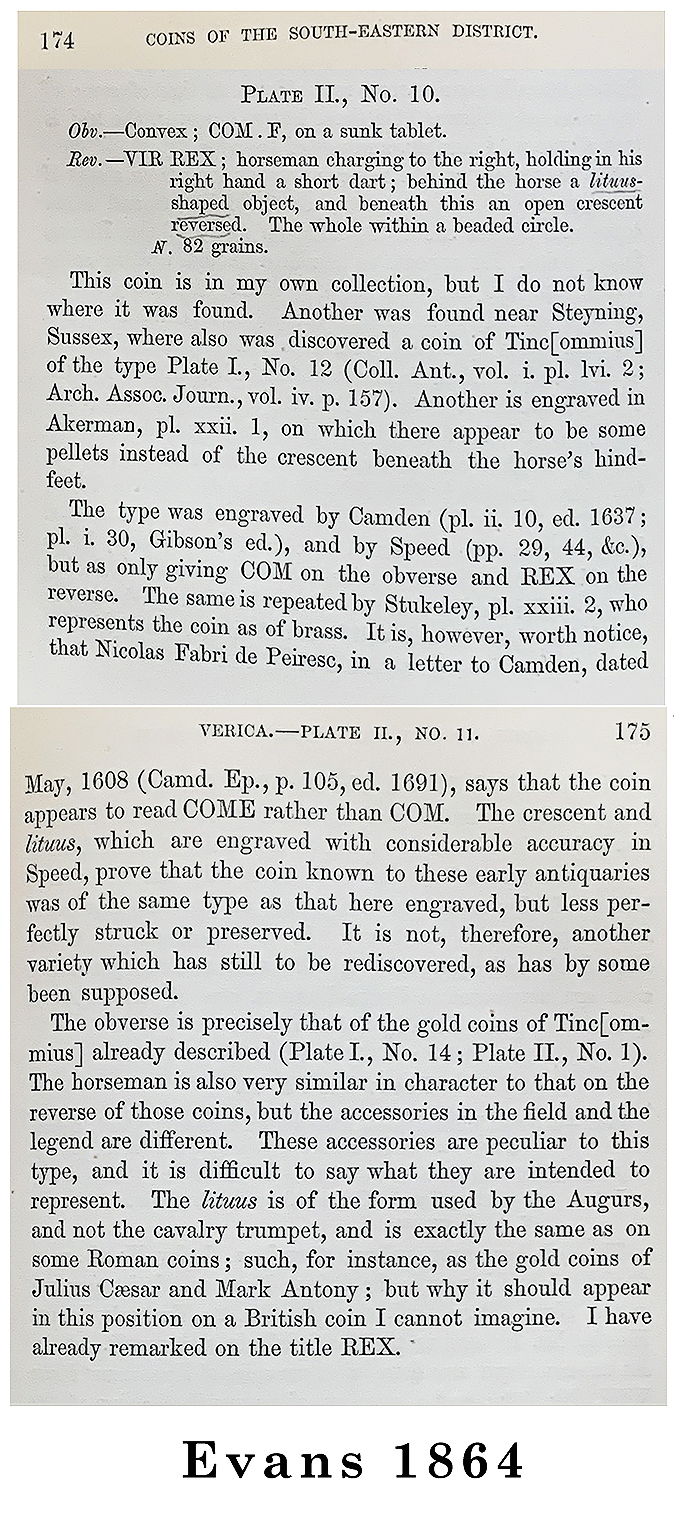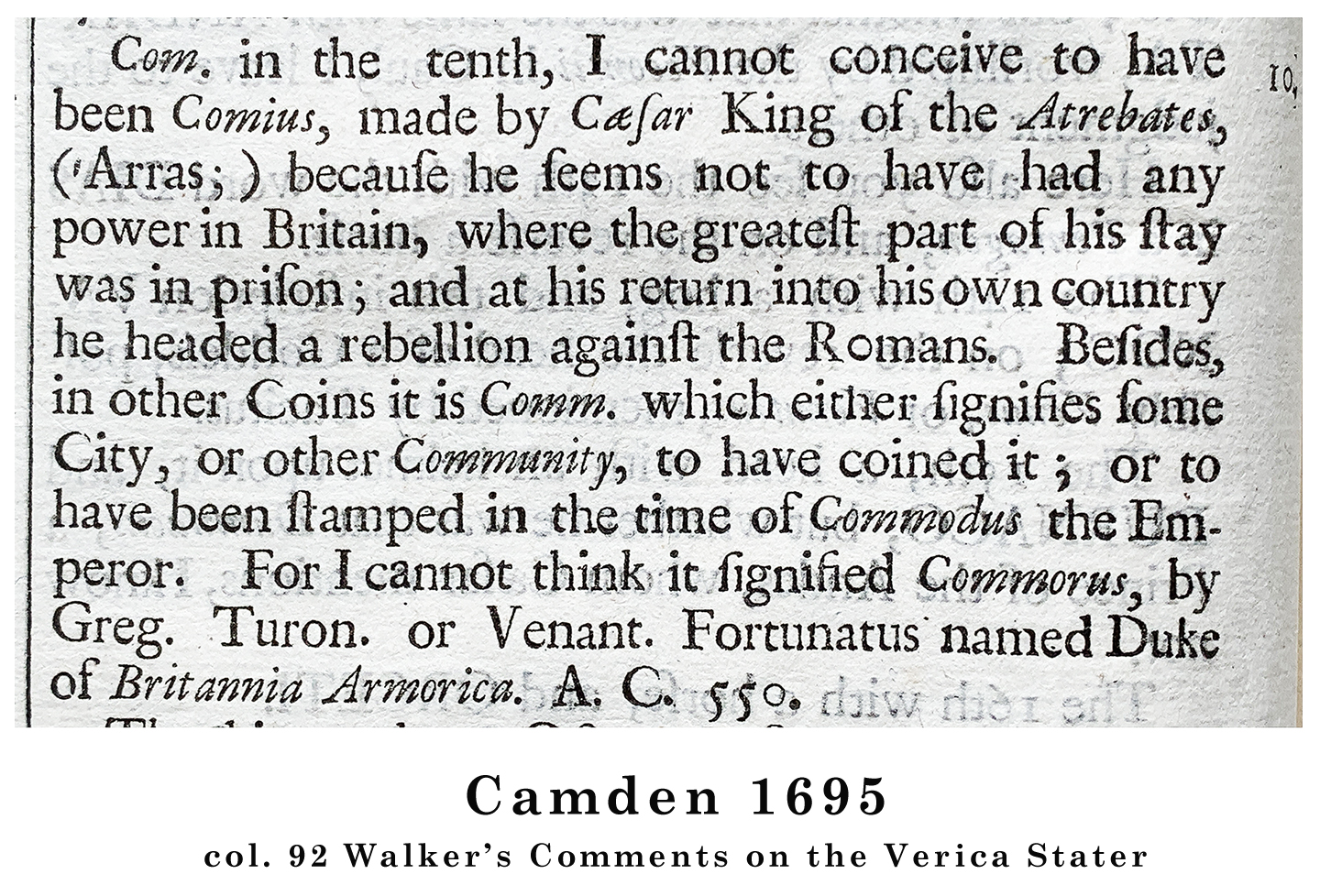Numismatic Articles
Van Arsdell 2022b (Info)
The Invisible Coinage of Verica
By Robert D. Van Arsdell
Introduction
In the late 1500s, antiquarian writers began to study Ancient British coins. Some coin inscriptions seemed to match the accounts of ancient Roman authors. Camden and Speed used these coins to illuminate a murky period in British history.
Cunobeline's coins were identified first. His large coinage with a bold "CVNO" was hard to miss – Camden illustrated four Cunobeline types in the 1590 edition of his Britannia. These are the earliest images of Ancient British coins to appear in print.
Surprisingly, the large coinage of Verica was not identified for another 250 years. Although a Verica stater was found before 1610, it was misattributed as a coin of Commius. Scholarly errors over the next two centuries made the coinage of Verica "invisible" to the general public.
The stater was mis-attibuted because it had been struck from damaged dies – the inscriptions could easily be misread. And, of course, Commius was a prominent figure in Caesar's Gallic War. The attribution to such a famous man proved to be an exciting discovery. It was easy to miss the correct attribution to Verica. He's only mentioned by Dio in one sentence. (Info)
The Early Reports
(Click the woodcuts to see the title pages)
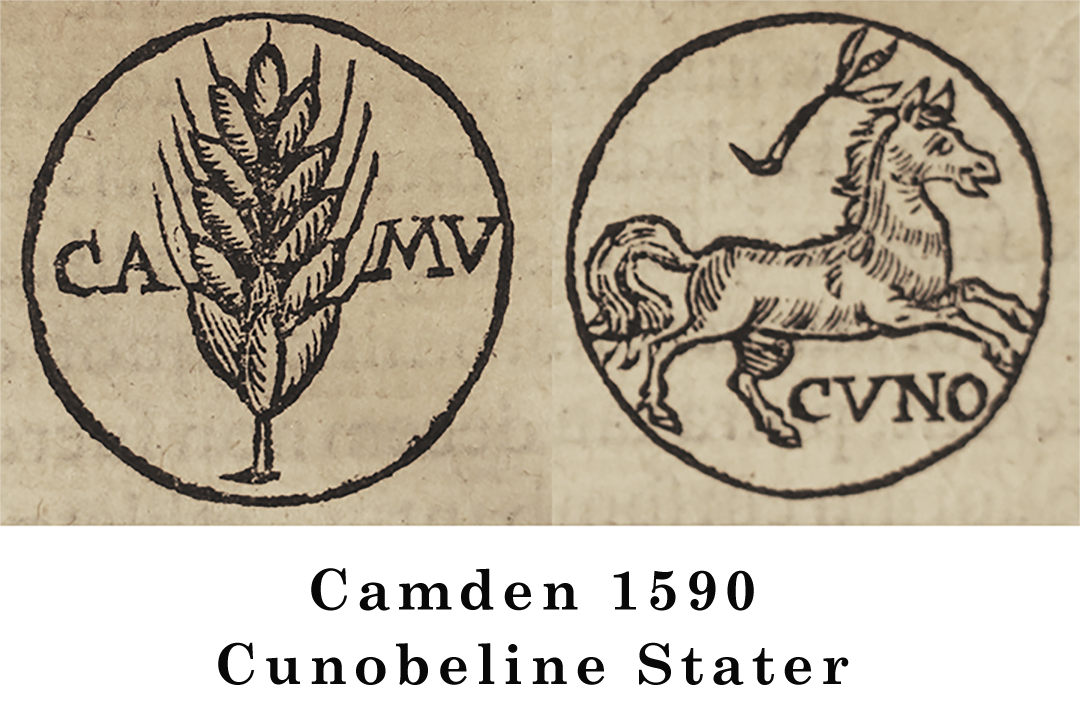
Camden's 1590 third edition of the Britannia showed five ancient British coins: four of Cunobeline and one uncertain type. He'd used them merely as illustrations, with little description. But the illustrations proved to be popular and attuned readers to the idea that the Ancient Britons used proper coins. (See the other coins in Camden)
Camden's success started off a three hundred year search for coins struck by rulers mentioned in Caesar, Dio Cassius and other ancient authors.
Camden 1607-1610
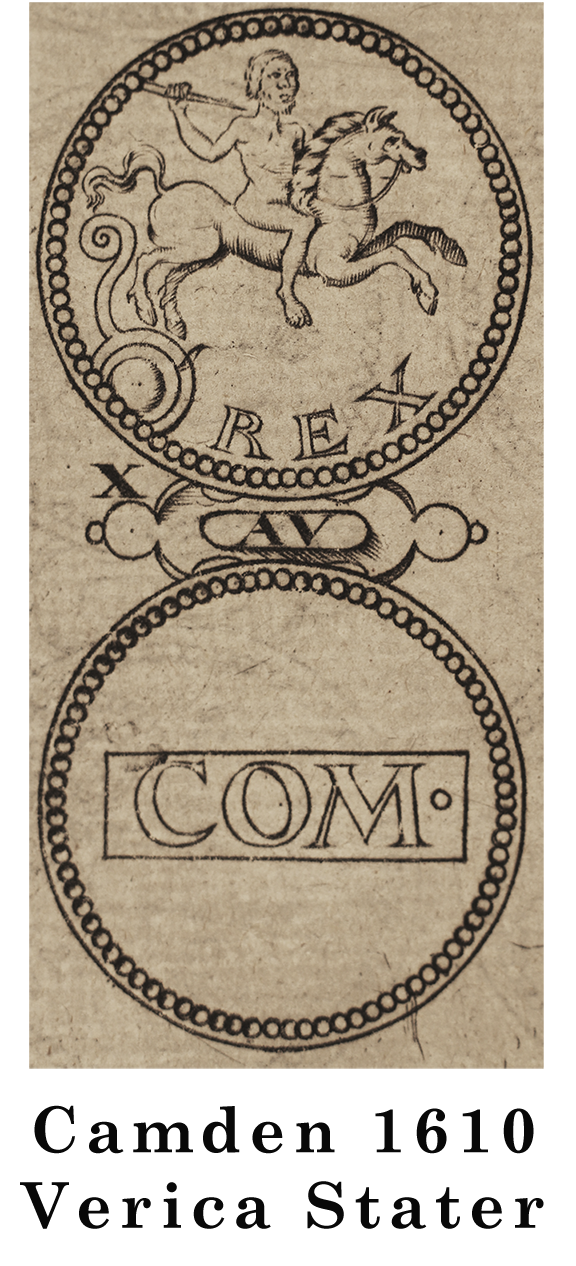
Within twenty years, a gold stater of Verica was discovered. Camden used it as an illustration in the 1610 edition of the Britannia. (Details)
Unfortunately, Camden misread the inscription on the obverse, and attributed the coin to Commius, not Verica. Commius was a major figure in Caesar's Gallic War. Verica was mentioned only in one obscure passage in Dio. Of the two, Commius was probably the better choice at the time.
Today, examples of the type are known from a set of dies that became very worn. As luck would have it, Camden's coin would be struck from the worst state of the pair. The "VER" above the horse is very weak, and the FI in "COM-FI" is almost obliterated. Camden would ignore the VER and FI completely and take the inscriptions to read COM REX – Commius, King. Numismatic authors would repeat this error for the next 200 years. Ackerman would eventually illustrate the coin correctly (in 1846) and Evans would begin to publish the facts in 1864. (Details)
Speed 1611
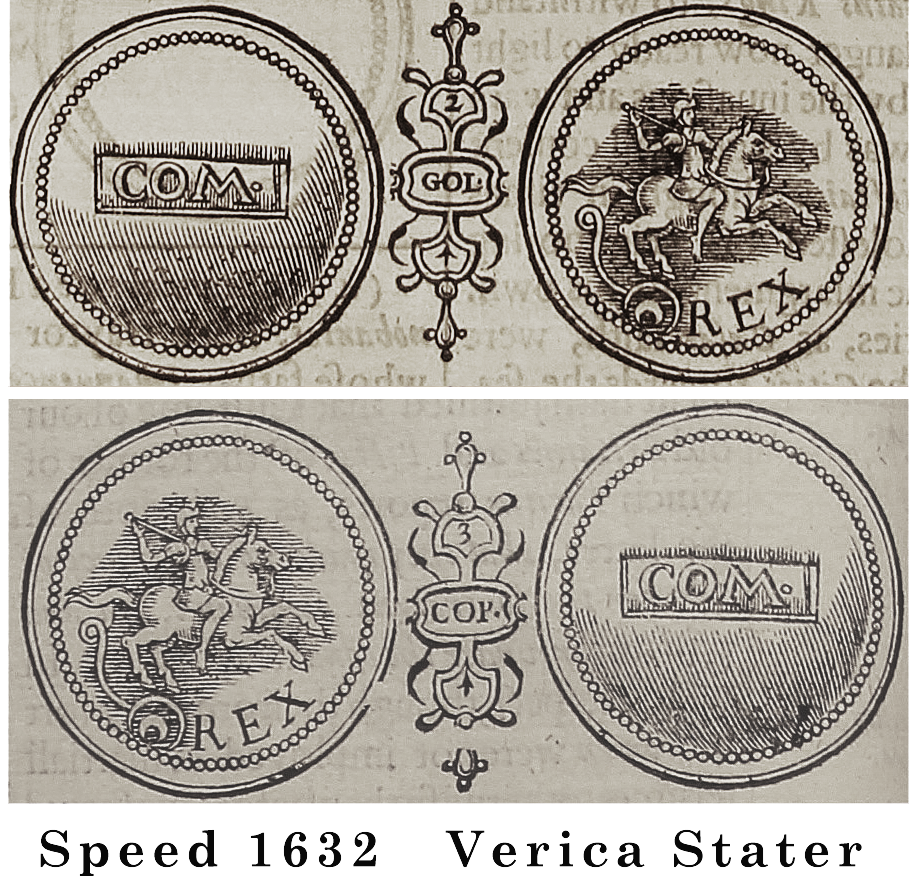
In 1611, John Speed used the same stater as an illustration in his Historie of Great Britaine. It appears to be a simple copy of Camden's plate, showing no new details about the imagery. It also fails to correct the misreading of the inscriptions. (Info)
Strangely, Speed illustrated the same coin twice – the second time as a copper coin. This, and the continued misreading of the inscriptions suggest Speed never saw any coins.
One could make too much of this illustration of the copper coin. There's no text to show that Speed knew of one, nor a plated forgery. Most likely, he was making the most of the pictures he had at hand, and wasn't concerned about accuracy. Fortunately, later writers ignored the bogus copper coin. Speed could have invented a non-existent copper coinage for Verica.
Speed's illustations tell us nothing new about the coin. He simply copied Camden's image and missed a chance to repair the numismatic record. But he set dangerous pattern for numismatic inquiry – authors could use images for their work, rather than looking at the coins themselves.
Camden 1695
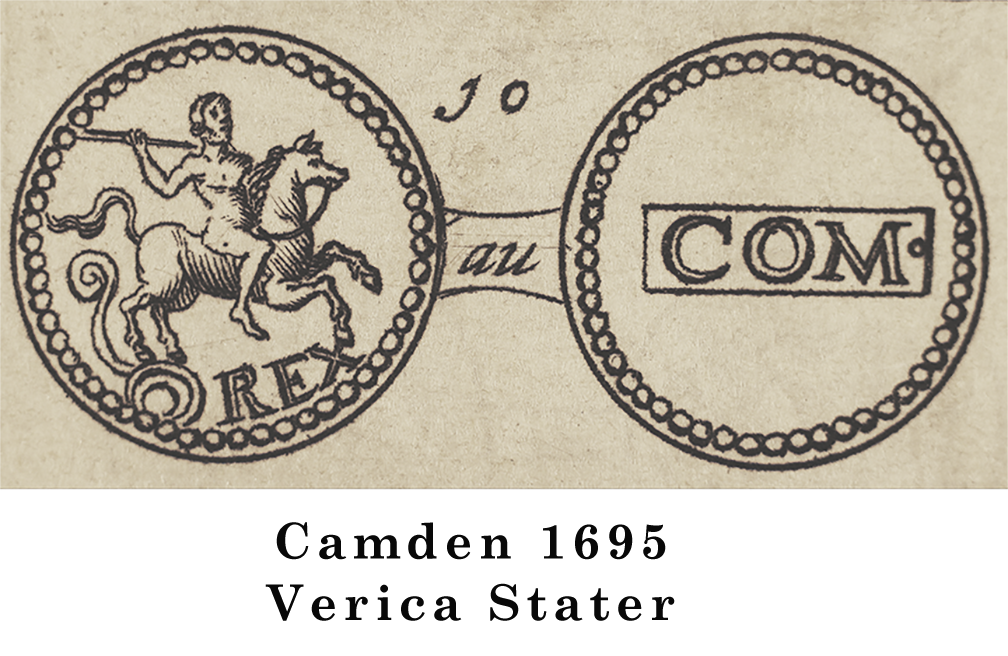
In 1695, Edmund Gibson published a new English translation of the Britannia. This had a new set of plates for the coins. Gibson recruited Obadiah Walker, a respected numismatist, to re-evaluate the images from the Philemon Holland edition of 1610.
The Verica stater was included again, but the image is a simple copy of the one from 1610. There are no new details shown, and the erroneous inscriptions are copied from the old plates. For some reason, Walker didn't track down the coin and look at it closely. His description of the coin shows he had good reason to do so. (Info) Walker suspected the attribution to Commius was wrong. But he didn't check to see if the coin inscriptions had been misread. He accepted that Camden's plate was faithful and reused the old imagery. Without a better reading of the inscriptions, he had no basis for making a better attribution.
Stukeley 1776
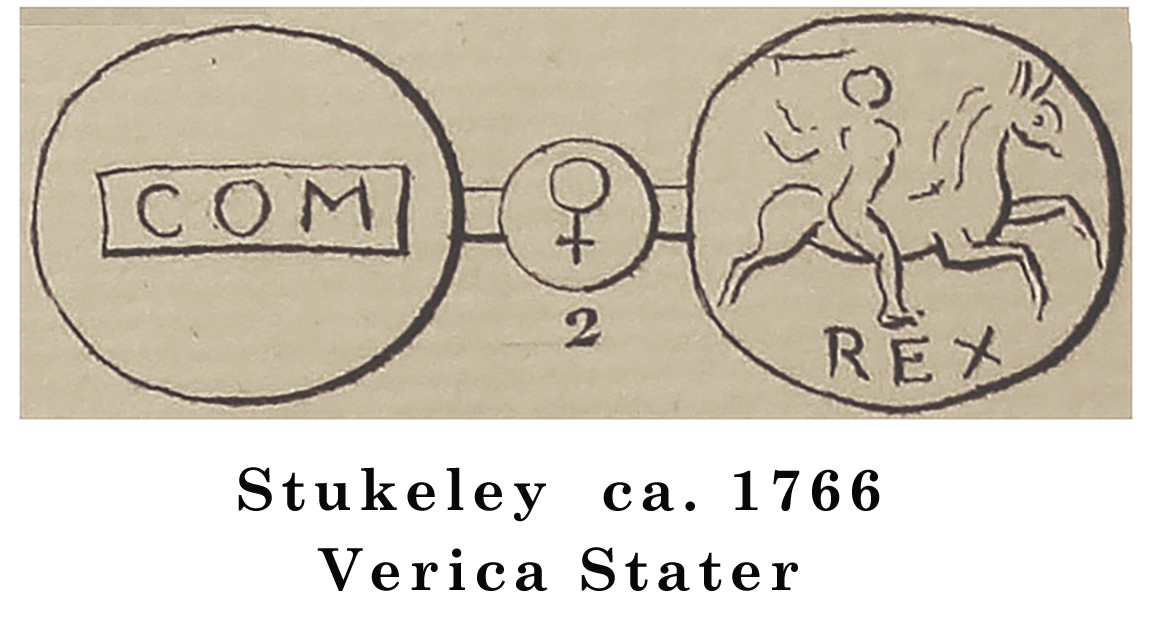
Stukeley appears to have copied one of the earlier images for his Britannia Metallica. His image in Plate 23 is very crude, suggesting that the woodcut engraver never saw a published image, much less a coin. It's almost as if the engraver was given a sketch from which to work.
Stukeley died before his book was finished, and only the plates were published posthumously. His manuscript notes for plate 23 do not mention the coin at all. It's possible he was trying to verify the attribution to Commius, but never managed to to it.
Why did it take 250 years to identify Verica's coinage?

Verica's coinage was discovered using other coins – ones that showed the name "VERICA" in full. (Details) The correct attribution of Camden's stater came later.
Today, one would like to see his plate coin and find out what went wrong. We might explain why it took so long to read the inscriptions correctly.
If Camden's coin still exists, hopefully someone can find it. A set of badly damaged dies could explain everything. Unfortunately, the coin's been missing since 1608. (Info)
Simulating the Die Damage
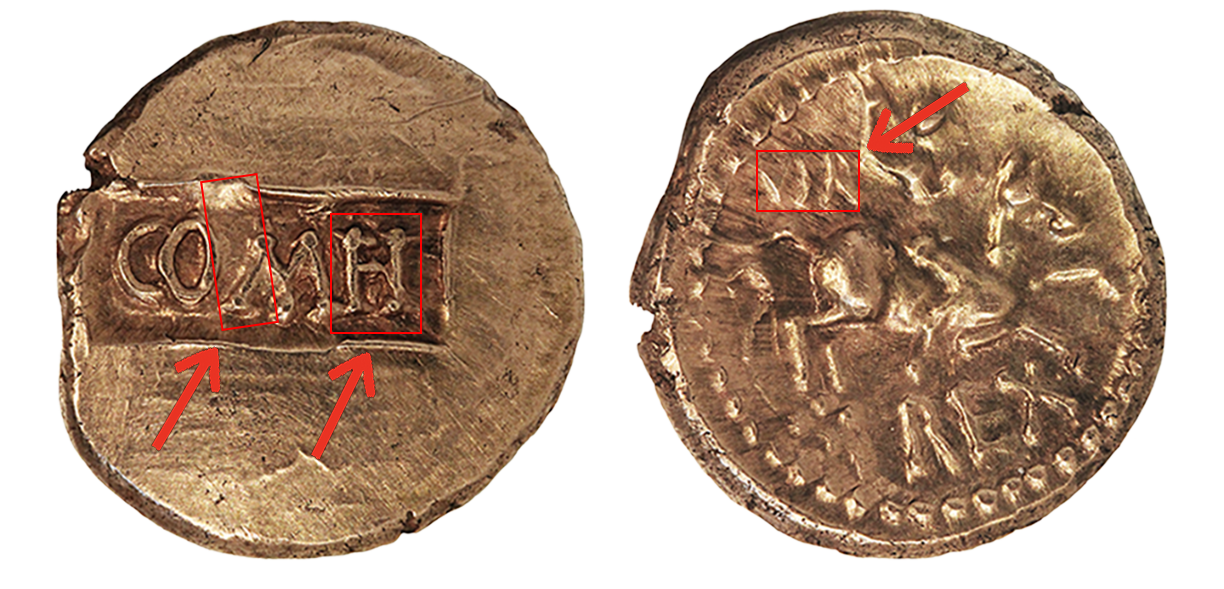
A different approach would be to simulate the appearance of the missing coin using photo-editing software. The simulated image could be used to identify Camden's coin.
To do this, we should start with a coin similar to Camden's, but one struck from fresh dies. When we make the photo-edits, the blurring and distortion will be easy to see. The coin in the illustration is a good one to start with. We know this coin had a weak VIR to start with, and the "FI" on the obverse became completely worn as the die was used. (Details)
The red arrows point to the areas for photo-editing.
First Round of Photo-Edits
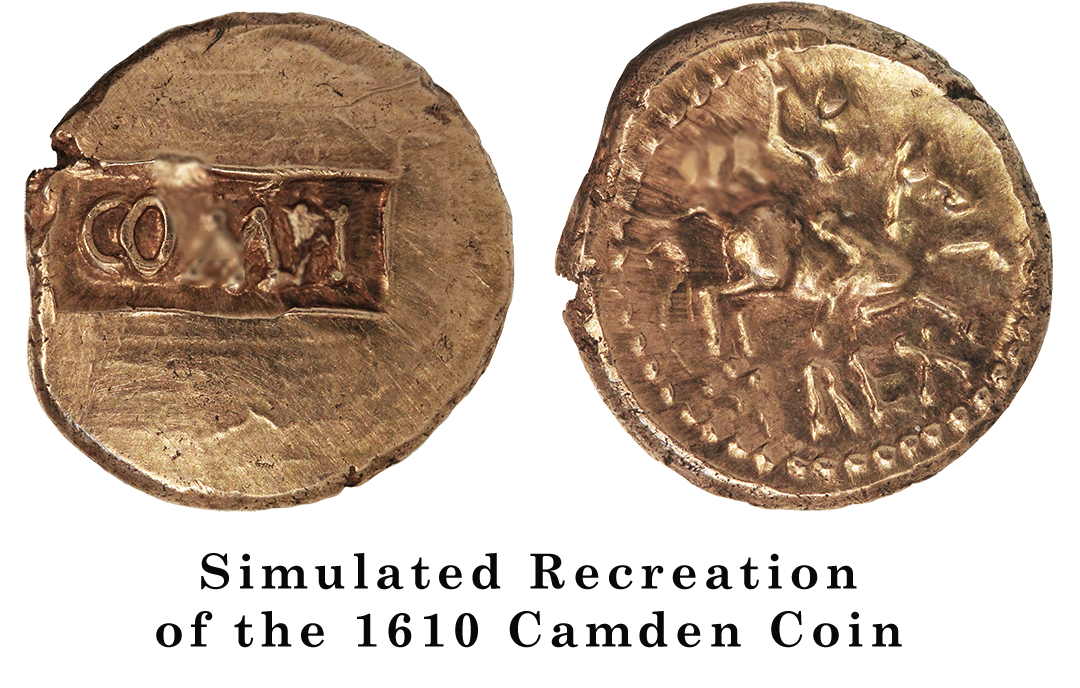
The photo-editing has been done in two stages. The first stage approximates the damage seen on HCR 52864 (a coin in the Ashmolean Museum with extensive die-damage).
Here, the FI has been distorted to the extent that the F is unreadable, but one can still make out the I. The M has been blurred slightly. The VIR has been blurred, but it's almost readable. This simulation probably doesn't have enough editing to give us a good idea of Camden's stater. It needs additional work.
Second Round of Photo-Edits
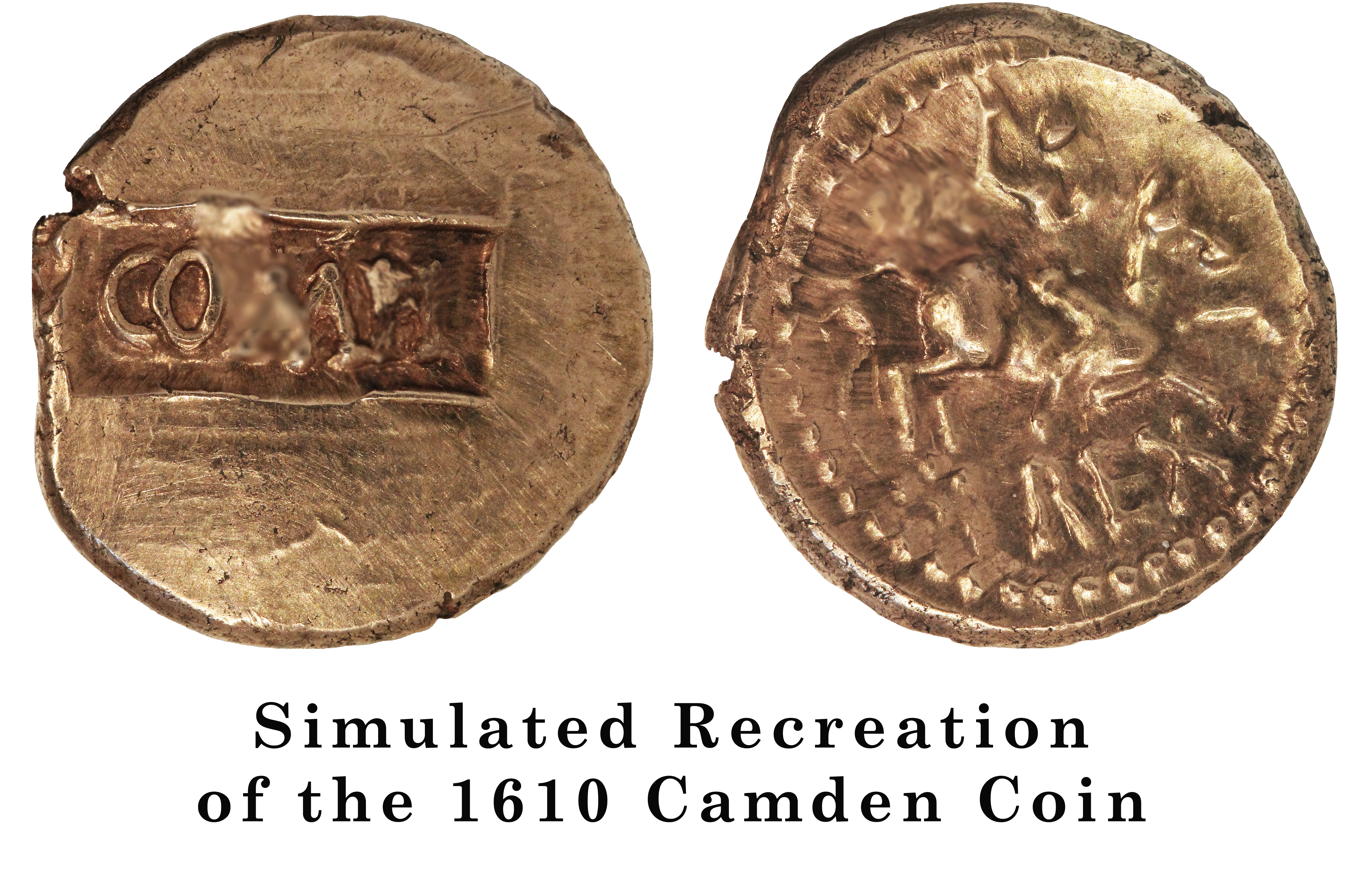
The second stage of photo-editing is more severe. The I in FI has almost been obliterated, The VIR has been blurred further so that it's now unreadable. The M is the same as the first simulation.
Camden's coin must have looked something like this. We know, however, this isn't a perfect simulation. Camden's friend claimed to see COME on the obverse, so the distortion of the FI must have been different to some extent. Camden's coin also had the horse standing on double crescents, not an array of pellets.
It's important to remember, this simulation's been done to accentuate the photo-editing. With further manipulation, the edited areas could be integrated into the overall image. Those areas would no longer stand out, and the image would appear to be that of a real coin.
If this simulation helps someone to identify Camden's coin, it will have served its purpose.
Summary
Although a Verica stater had been found before 1610, it would take another 250 years to identify it correctly. Verica's coinage might have been identified immediately, but repeated errors would assure it remain unknown until the mid-1800s.
Camden's coin had likely been struck from damaged dies, and the inscriptions had been misread. All published images of this coin would show erroneous readings of the inscriptions. The antiquarian authors would copy Camden's mistake over and over – that Commius had struck the coin.
Akerman, in the mid-1800s finally published a correct image of the type. Soon, other coins were discovered with a complete reading of the name "VERICA". Verica's coinage would be identified correctly by 1850.
Images Always Lie To Us
A final comment would be that the photo-edited images above, crude as they are, demonstrate that photographs can and do lie to us. The images you see do not represent real coins.
Researchers should become familiar with the ways images distort reality – even unmodified images. Perhaps the place to start would be the realization you lose information as a three-dimensional object becomes a two-dimensional photograph.
The important point is that working only from images carries risks for researchers.
End

